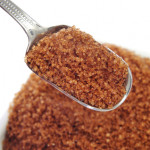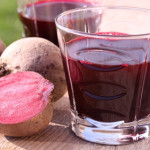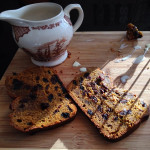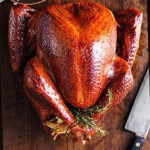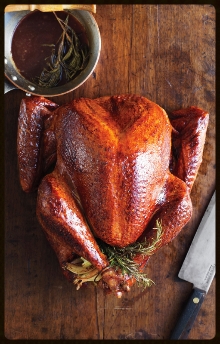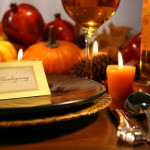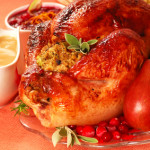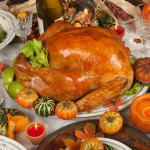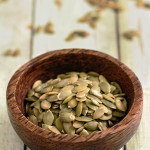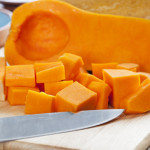Brown Sugar
Most brown sugars are made of white granulated sugar to which a dark syrup has been added. Dark brown sugar has a mild molasses, and light brown sugar has a milder, lighter syrup, which may also be molasses. Dark brown has a slightly stronger flavor, but they may be used interchangeably.
You can easily make your own brown sugar, as you need it by blending together 1/2 cup of granulated sugar with 2 tablespoons of unsulphured molasses. The yield is equivalent to 1/2 cup of brown sugar.
Brown sugar is moist and if it dries out it will harden. It should be stored airtight at room temperature. If it has small lumps in it they should be strained out. With your fingertips press the sugar through a large strainer over a large bowl. If your brown sugar has been left open and becomes hard, place a dampened (not wet) paper towel inside the airtight container for 12 hours or more. A slice of apple can be used in place of the dampened towel.
"Work With What You Got!"
© Victoria Hart Glavin Tiny New York Kitchen
Old Fashioned Food Coloring
Next time you have a need to use food-coloring trying using natural dyes the old fashioned way. Just do what grandma did, and use fresh beet juice for red; turmeric for yellow, and blueberry juice for blue. You’ll save money and have peace of mind that you used truly natural dyes.
"Work With What You Got!”
© Victoria Hart Glavin Tiny New York Kitchen
Make Pumpkin Bread Eggnog French Toast Of Course!
Turkey Roasting Instructions
Remove turkey from refrigerator at least 1 hour prior to roasting.
Preheat oven to 325 degrees.
Place turkey in sink and remove neck and giblets.
Place in roasting pan and brush with melted sage butter and season with kosher salt and pepper.
Place turkey in lower third of oven and roast for 12 minutes per pound.
To determine if turkey is done, place a thermometer between thigh and breast. The temperature should register between 160 to 165 degrees and juices should run clear.
When turkey is done, remove from oven, cover loosely with foil, and allow to “rest” for 30 to 45 minutes which allows you time to heat all your other side dishes.
Carve and enjoy!!
Approximate cooking times for an unstuffed turkey (based on 12 minutes per pound at 325 degrees):
9 Pound Turkey 1 3/4 Hours
12 Pound Turkey 2 1/2 Hours
14 Pound Turkey 2 3/4 Hours
16 Pound Turkey 3 1/4 Hours
18 Pound Turkey 3 1/2 Hours
20 Pound Turkey 4 Hours
22 Pound Turkey 4 1/2 Hours
25 Pound Turkey 5 Hours
"Work With What You Got!"
© Victoria Hart Glavin Tiny New York Kitchen
Thanksgiving is nearly here. If you’re hosting Thanksgiving dinner don’t panic. Here are some important tips that will help you get organized and ensure that your meal goes smoothly and tastes delicious. What’s important is enjoying being with family and friends.
- Plan your menu according to the number of guests you’ll have.
- Order your turkey! Just how big should your turkey be? It’s recommended to have at least 1 1/4 pounds per person. If you round up a bit from that number, you’ll be able to enjoy leftovers.
- Finish your food shopping, and pick up your turkey two days before Thanksgiving. I hope that you’re turkey is a fresh one at this point. How long does a frozen turkey take to defrost? You’ll need to allow ample time to defrost your turkey in the REFRIGERATOR. Turkeys less than 12 pounds will take as long as two days to defrost. A turkey more than 20 pounds can take up to five days to defrost.
- Prepping is important. Make pie crust and store in the refrigerator. Finish any baking (cornbread, muffins, pies). Peel and cut potatoes, and store in water in fridge. Make fresh cranberry sauce. Cut carrots, celery, onions, and mushrooms for stuffing. Sauté and store in fridge. Place white wine in fridge to get nice and chilled.
- The day before Thanksgiving prep green beans, Brussels sprouts, cauliflower, or any other vegetables, and store in a Ziploc bag in the fridge. Set the table and label serving dishes.
- Thanksgiving Day prepare stuffing and other side dishes. Prepare turkey for roasting and place in oven at determined time. If you choose to stuff the turkey, do it right before you put it in the oven. Take stuffing out of the turkey immediately after cooking. While turkey is roasting, make mashed potatoes.
- How do you know when your turkey is done? Use a meat thermometer inserted into the meatiest part of the turkey. Wait for the reading to reach at least 165 degrees. If you’ve stuffed the bird, make sure that also reaches the same temperature for food safety purposes.
- Those glorious leftovers! If you refrigerate the turkey within two hours of serving, your leftovers will last three to four days.
- Try to relax and wait for your guests to arrive.
- Have a wonderful Thanksgiving!
"Work With What You Got!"
Victoria Hart Glavin Tiny New York Kitchen
Yes, this is an ENTIRE piece on how to thaw a turkey because it’s THE most important part of planning your Thanksgiving menu (if you purchased a frozen turkey that is). Food safety is important so please take a few minutes to review these thawing directions.
1. Make sure to thaw your frozen turkey in the wrapper it came in, UNOPENED.
2. Place it, breast-side up, on a try in the refrigerator.
3. Once thawed, your turkey will keep in the refrigerator for up to 4 days. You should err on the side of thawing a day or two before you’re ready to cook it. This helps prevent any “last minute” thawing issues.
4. If you plan on brining your turkey add an additional thawing day.
5. If you do procrastinate, you can thaw your turkey in cold water. Place the still-wrapped turkey in a container large enough to allow it to be covered with water. Fill the container with cold water and change the water every 30 minutes. This method will thaw a turkey at the rate of about 1 pound every 30 minutes. An 18 pound turkey will take 9 hours to thaw with this method which is why it’s best to plan ahead.
6. NEVER EVER thaw a turkey out on the counter or in warm water. You are creating the perfect environment for bacteria and could end up with a family trip to the emergency room instead of a family weekend of fun!
7. Here is a chart that you can use to determine thawing times.
|
Turkey Size |
Thawing time (In the Refrigerator) |
|
8-12 lb. |
2-3 days |
|
12-14 lb. |
3-3½ days |
|
14-18 lb. |
3½-4½ days |
|
18-20 lb. |
4½-5 days |
"Work With What You Got!"
© Victoria Hart Glavin Tiny New York Kitchen
I just ordered my Thanksgiving turkey, which I like to get done early, as it truly is the star of Thanksgiving dinner. When planning your holiday menu purchasing a turkey is the first thing to consider. Should you buy fresh or frozen? Below is a breakdown of turkey buying options.
Fresh Turkey
Purchasing a fresh turkey is my first choice by far. Fresh turkeys often need to be ordered in advance because not all markets carry them. They tend to be more expensive than frozen turkeys because they have a short shelf life. Because they should only be kept in your refrigerator for about 2 days before roasting, you will need to plan carefully.
Kosher Turkey
Many chefs and home cooks like buying kosher turkeys. Making a turkey kosher involves soaking it in a salt brine. Kosher turkeys give you the flavor, tenderness, and juiciness of brining without requiring the time it takes to brine in your own kitchen. If you use a kosher turkey, be sure to omit any salt that may be in the recipe or it will taste way too salty.
Free-Range Turkey
Free range means that the turkey has been raised in a facility that allows the birds to have access to the outdoors and a yard to walk around in. Free-Range turkeys can be either fresh or frozen. This does not, however, imply organic.
Organic Turkey
For poultry to be labeled organic, it must be fed organic grains its entire life, never receive antibiotics or hormones (no poultry is allowed to receive hormones in the United States) and must have access to the outdoors. Like free-range turkeys, they can be purchased either fresh or frozen.
Prebasted Turkey
Prebasting is a process that adds moisture to a turkey in the form of broth and flavorings under the skin. Turkey experts agree that there is no need to baste a turkey, whether it is prebasted or not. The liquid you pour over a cooking turkey doesn’t actually make the turkey juicier, and opening the oven door to baste just means that the turkey will take longer to cook due to losing heat every time the oven door is opened.
"Work With What You Got!"
© Victoria Hart Glavin Tiny New York Kitchen
Don’t Forget The Seeds!
Just like pumpkins, the seeds of butternut and other hard winter squashes can be tossed with a splash of olive oil and a pinch of kosher salt, then toasted for a crunchy every occasion snack.
Keep Squash Fresh
A whole squash can be stored in a cool, dry place for up to a month. Once peeled and cubed, it will stay fresh in the refrigerator for up to one week in an airtight container. Once peeled and cubed, don’t keep it any longer than a week in an airtight container in the fridge. If flesh had dark or mush spots, it’s time to throw it away.

